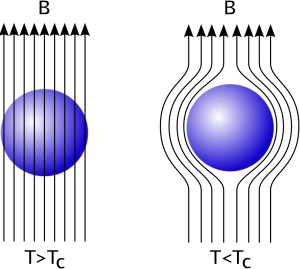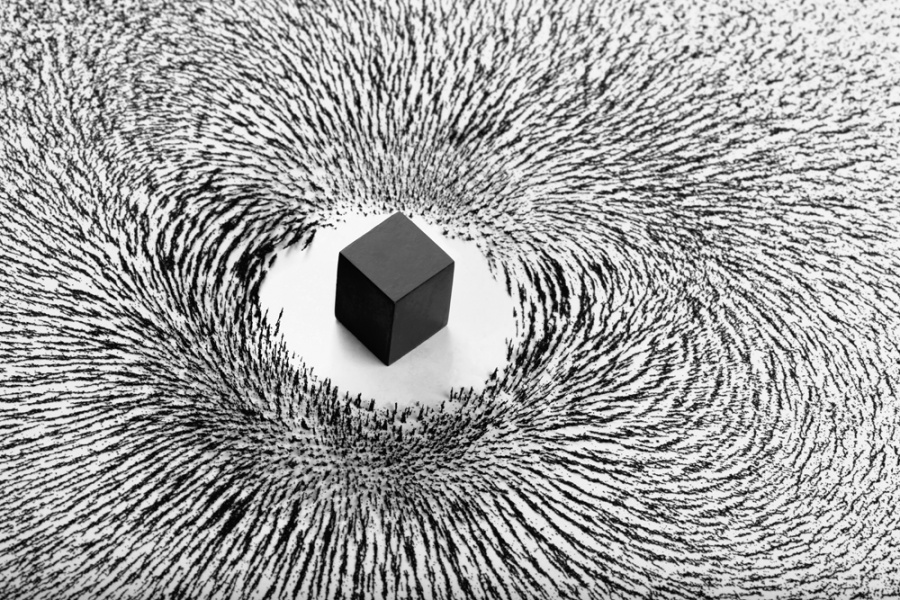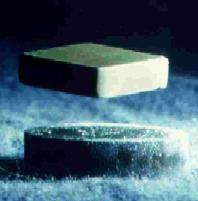The Basics
An important topic in the field of magnetism and electricity is the existence of superconductors. (7*)
 |
A result of this zero resistance and
ability of currents to flow within the material perfectly
resulted in something called the Meissner effect. As Schmidt
explains in his book, The Physics of Superconductors,
it was discovered that in a superconductor, the field within
it was always zero, meaning there was no magnetic flux
inside the material (Schmidt, 5). This appears mainly in
Type 1 materials.
(8*)
 There are two types of known superconductors: Type I and
Type II. Represented on top is a Type I superconductor,
which, when it is below
There are two types of known superconductors: Type I and
Type II. Represented on top is a Type I superconductor,
which, when it is below  its critical temperature, does not let any
magnetic flux through the material, when in a weak magnetic
field (All About Superconductivity).
(9*)
its critical temperature, does not let any
magnetic flux through the material, when in a weak magnetic
field (All About Superconductivity).
(9*)
This is what creates the
strange behavior of some materials.



